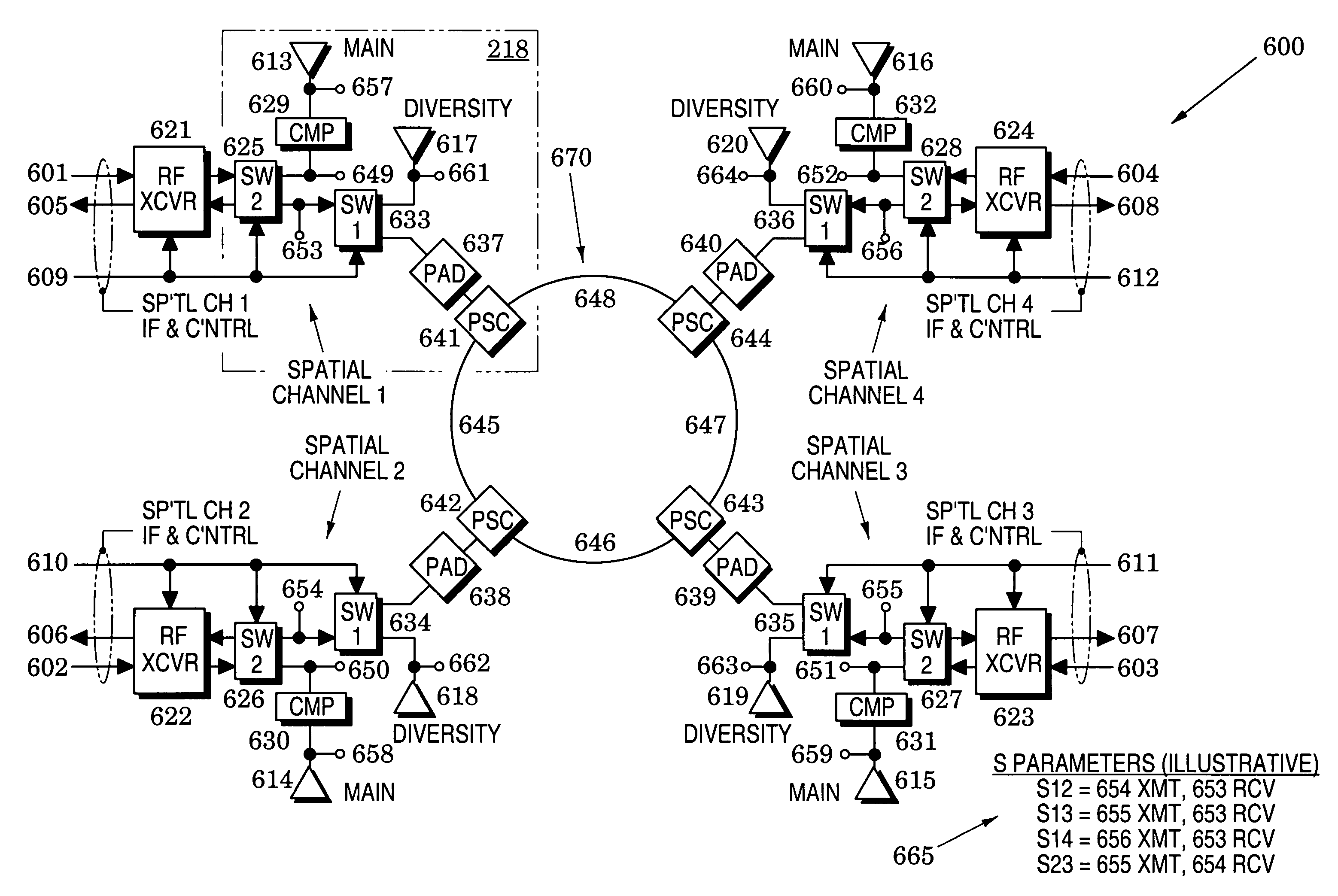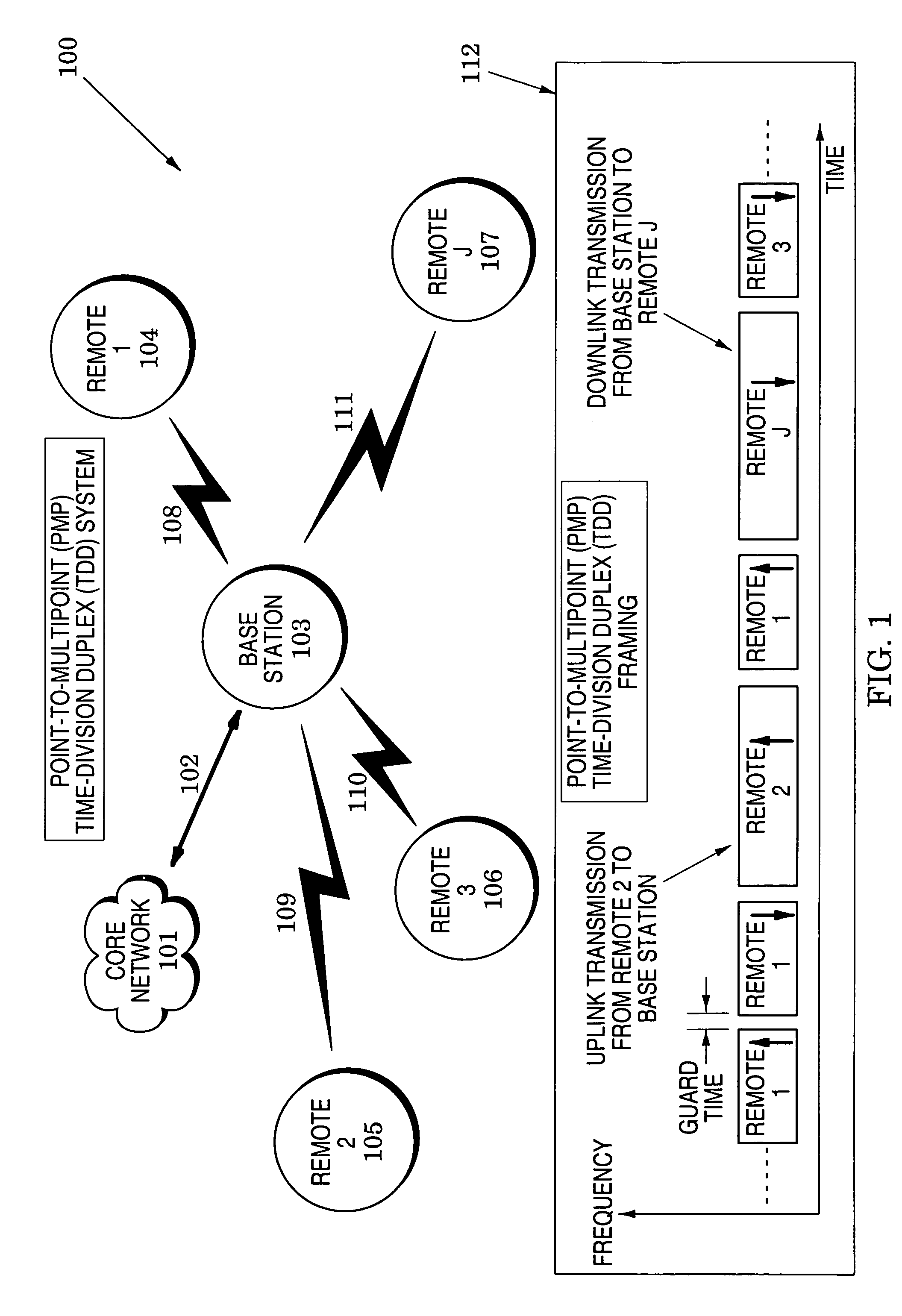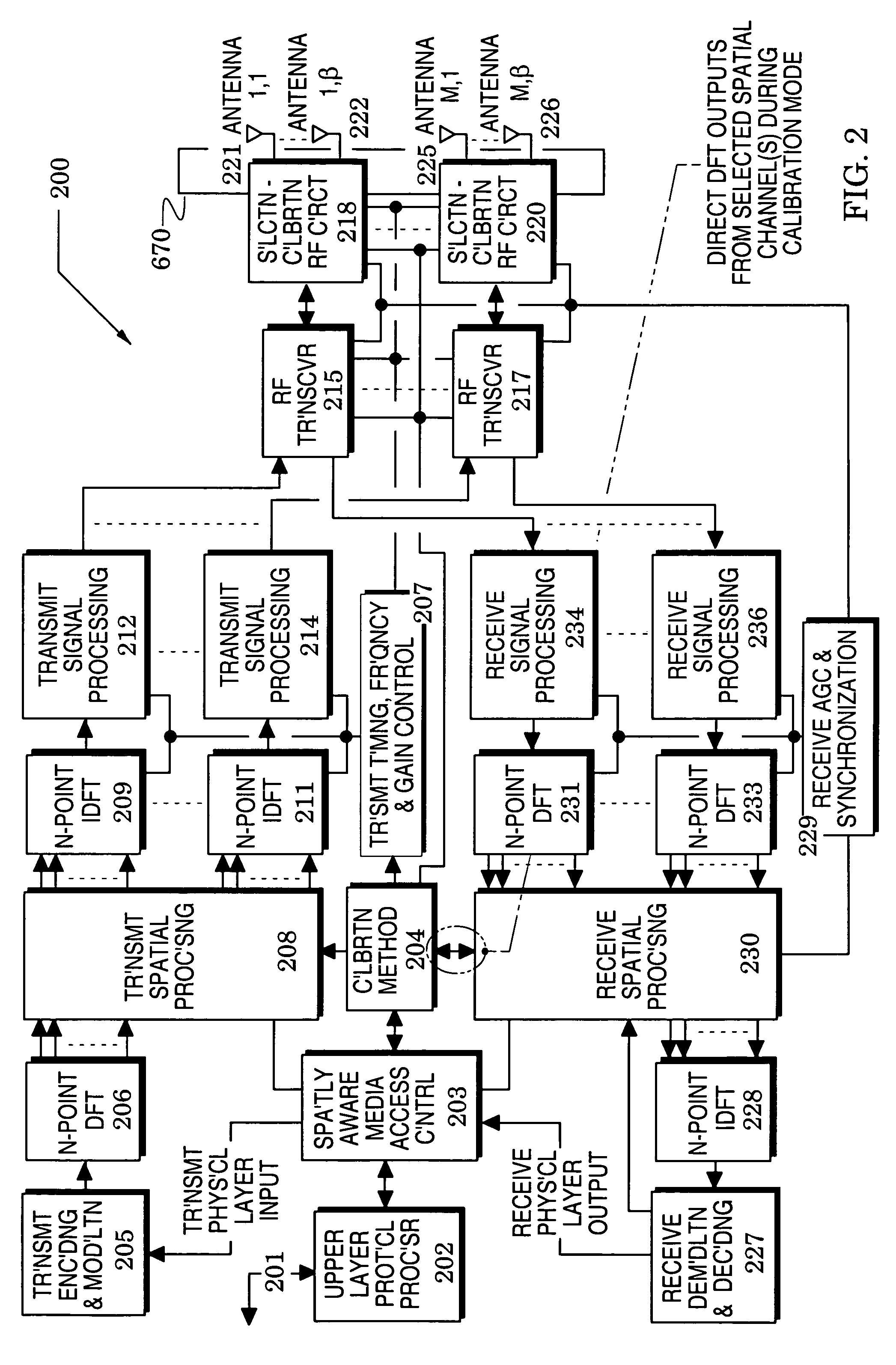Calibration methods and structures in wireless communications systems
- Summary
- Abstract
- Description
- Claims
- Application Information
AI Technical Summary
Benefits of technology
Problems solved by technology
Method used
Image
Examples
embodiment 200
[0024]The present invention is particularly directed to wireless communications devices which may be advantageously used, for example, in the communications system 100 of FIG. 1. An embodiment 200 of a wireless communications device of the invention is shown in FIG. 2 and a flow chart 300 of FIG. 3 illustrates basic calibration processes in this unit. To enhance understanding of the processes of the flow chart 300, its description is preceded below with an examination of the elements of the system of FIG. 1 and the unit of FIG. 2. Receive and transmit processing details of the wireless communications device 200 are then described with reference to FIGS. 4 and 5.
[0025]Subsequently, a calibration structure embodiment is described with reference to FIG. 6 and the following description of FIG. 7 examines exemplary calibration processes that are realized with the calibration structure. Finally, a description of FIGS. 8-10 discloses OFDM transmission, reception and calibration signals tha...
first embodiment
[0070]The determination of the factor αRX2(f) depends on the type of receive spatial processing algorithm and how it processes differential errors between spatial channels. This factor may be dynamic, based on whether the receive subsystem is thermal or quantization noise limited, for example. As in the first embodiment, the calibration coefficients for other spatial channels may be obtained by replacing “2” in the above equations with the spatial channel number (1 through M).
[0071]The calculated calibration coefficients are then applied in process step 306 of FIG. 3 and as further described below with reference to functions of the transmit spatial processing 208 and the receive spatial processing 230. After this application, elapsed time is measured in process step 307 and compared to a calibration interval threshold in decision 308.
[0072]When decision 308 determines that the elapsed time exceeds the calibration interval threshold, the method monitors the status of the communicatio...
embodiment 400
[0074]FIG. 4 illustrates an embodiment 400 of the receive spatial processing 230 of FIG. 2 wherein DFTs 231-233 and the calibration method 204 were introduced in FIG. 2 and a time index for frequency domain signals nTDFT is not shown for the sake of clarity.
[0075]The frequency domain signals from each receive spatial processing channel 1 through M are, optionally, compensated for frequency error by frequency offset correction (freq'ncy offset corr'ctn) 401-403 (under control of the receive AGC and synchronization 229 of FIG. 2). This function is optional since in some embodiments it is possible to correct for frequency error prior to the DFT operations.
[0076]The source of the frequency offset may, for example, be RF local oscillator differences, sampling frequency errors, or other implementation-related factors. Frequency offset correction 401-403 is preferably capable (with any of various frequency-correction methods) of correcting for a different frequency offset on each DFT outpu...
PUM
 Login to View More
Login to View More Abstract
Description
Claims
Application Information
 Login to View More
Login to View More - R&D
- Intellectual Property
- Life Sciences
- Materials
- Tech Scout
- Unparalleled Data Quality
- Higher Quality Content
- 60% Fewer Hallucinations
Browse by: Latest US Patents, China's latest patents, Technical Efficacy Thesaurus, Application Domain, Technology Topic, Popular Technical Reports.
© 2025 PatSnap. All rights reserved.Legal|Privacy policy|Modern Slavery Act Transparency Statement|Sitemap|About US| Contact US: help@patsnap.com



